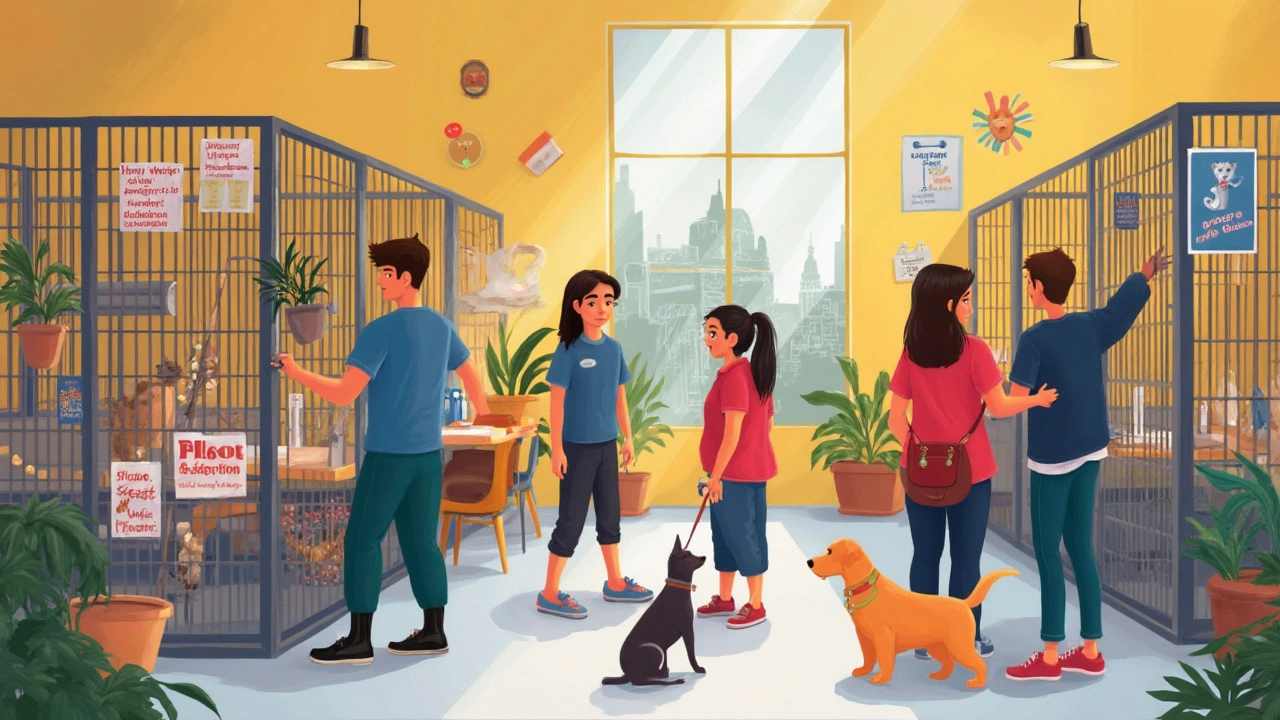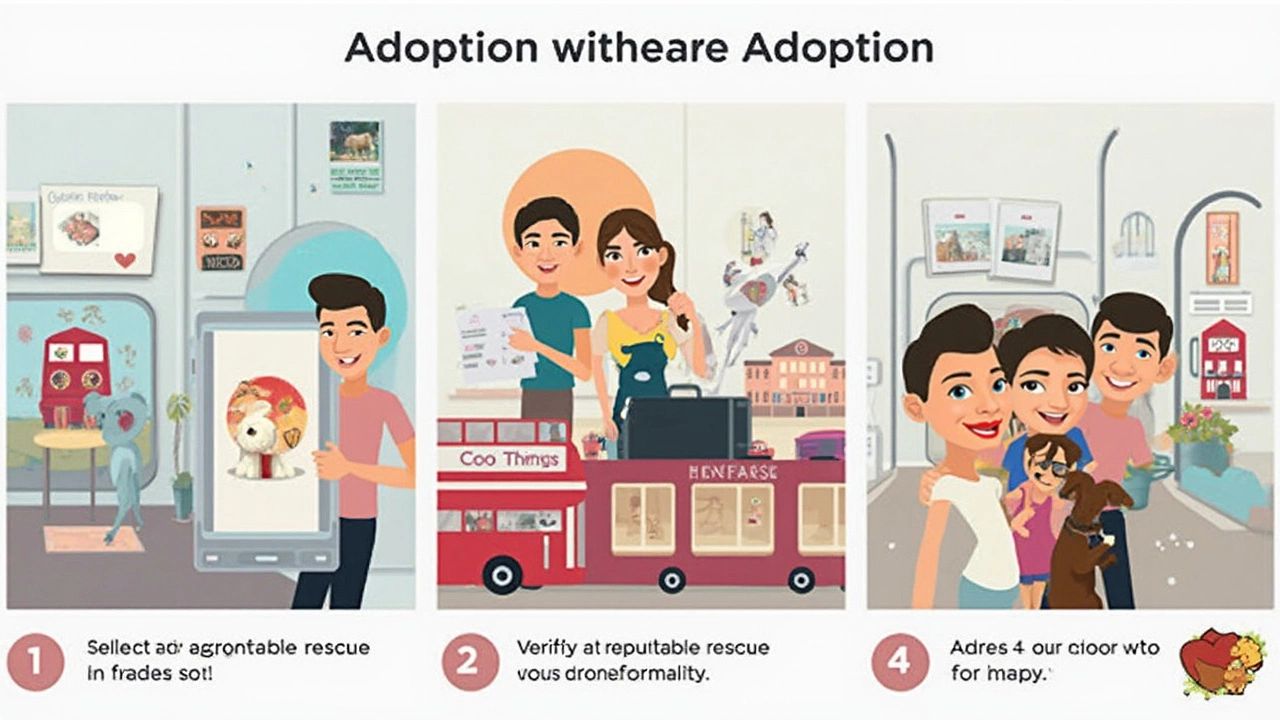Ever Googled “adopt a dog” or “cat for adoption” and immediately hit by dozens of sites, each claiming to be the best? It’s easy to get lost fast. Not all adoption sites play by the same rules—some make it easy to meet real pets needing homes, while others bury legit rescue animals behind ads or even scams.
If you’re looking to adopt, you need a site that actually connects you to shelters—not just pictures of animals that might not even exist. A good pet adoption site shares updated info, makes searching simple, and looks out for both pets and adopters. But which site actually does this best? And how can you tell if a listing is the real deal?
Before you invest your hopes in a cute puppy pic or click “apply now,” let’s cut through the hype and zero in on what works. Knowing what separates the trustworthy adoption sites from the ones full of red flags will save you time and heartache.
- Why the Right Adoption Site Matters
- Top Pet Adoption Sites Compared
- How to Spot a Trustworthy Listing
- Tips for a Smooth Search Experience
- Next Steps After Finding Your Match
Why the Right Adoption Site Matters
Picking the right pet adoption site isn’t just about scrolling through adorable animal pics. It can make or break your whole experience—from how easy it is to find your future best friend, to how safe and legit the process is. The best sites bring shelters and real people together, skip the middlemen, and actually help animals find homes instead of making you jump through endless hoops.
Not all sites are created equal. Some put rescue animals front and center and update their listings daily, while others are basically digital billboards for backyard breeders. According to the ASPCA, around 6.5 million companion animals enter U.S. shelters every year—so having directed, easy-to-navigate platforms really speeds up the process and gets more pets into homes faster.
It only takes a few clicks on the wrong site to run into fake listings, slow responses, or even outright scams asking for money up front. Besides losing time, you could lose cash or, worse, miss out on a real chance to help an animal in need. The right website doesn’t just list pets; it checks shelters for responsible management, posts animals that are actually available, and keeps things transparent for everyone. Here’s what to watch for when sizing up a pet adoption platform:
- Easy filters for species, breeds, and locations
- Clear, updated info and recent photos
- Direct contact with registered shelters or rescues
- Basic health and background details on each animal
- Secure application forms that protect your privacy
Let’s break it down further with some quick stats about how online adoptions work these days:
| Site Feature | What It Means for You |
|---|---|
| Verified rescue/shelter listings | Less chance of scams, more real animals in need |
| Updated daily | You don’t waste time on pets already adopted |
| Direct adoption support | Faster responses and help if you get stuck |
If you care about finding the right pet and making the process safe for both you and the animal, choosing the pet adoption site that’s legit matters a lot more than you might think at first glance.
Top Pet Adoption Sites Compared
When it comes to finding your new best friend, not all pet adoption sites are created equal. Some platforms focus on shelter animals, while others pull listings from everywhere with mixed results. Here’s what you actually get from the top names in this space.
- Petfinder: You’ve probably seen this one mentioned a ton—and for good reason. Petfinder works with 11,000+ shelters and rescues across the U.S. and Canada. Their filters let you search by animal type, age, size, and even personality (snuggly vs. high-energy, anyone?). Updates happen daily, so you’re seeing real, available pets. If you want one place to start, this is it.
- Adopt-a-Pet: This site feels a lot like Petfinder but has some cool extras—like being able to set up alerts for when your dream dog or cat gets listed. They also include direct links to each pet’s rescue so you know where your new buddy is coming from. Their navigation is super clear, which makes the process less overwhelming.
- ASPCA’s Adopt a Pet Portal: The ASPCA platform mainly lists pets from shelters and rescues that partner directly with them, so there’s some peace of mind about the quality and legitimacy of listings. They’ve also got plenty of resources for first-time adopters, like how-to guides and FAQs.
- Rescue Me!: If you’re searching for specific breeds or want to help an animal that’s been overlooked, Rescue Me! lets you browse by breed and location. They offer listings worldwide, but most are heavily U.S.-focused. It’s run by volunteers, so you sometimes get that personal touch during the adoption process.
- Local Shelter Websites: Sometimes skipping the huge platforms and heading straight to your city or county shelter website gets you the fastest results. Some shelters even post new arrivals to Facebook or Instagram first, so it doesn’t hurt to follow your local spots on social media, too.
What stands out most about the best adoption site? Real-time updates, clear info about the pet’s background, and easy ways to contact the shelter. Watch out for any site that never shows location or asks for payment before you even chat with the rescue. Stick with these widely trusted platforms, and you’ll have way fewer headaches tracking down your future couch cuddler.

How to Spot a Trustworthy Listing
Not every animal on a pet adoption site is what it seems. Sometimes, listings look too good to be true because they are—think old photos, stolen animal bios, or even nonexistent rescues. So, how do you make sure that cute pup actually needs a home and isn't part of a scam?
- Best pet adoption sites work directly with real shelters and certified rescue groups. Make sure the site lists the shelter’s name and location right on the page. If a listing feels mysterious or just gives a personal email or phone number with no website, be extra cautious.
- Read the animal’s bio carefully. Trustworthy sites show up-to-date info—like age, breed, personality notes, and medical history (vaccines, neuter/spay status). Vague bios, no details, or a ton of stock phrases are red flags.
- Clear, recent photos matter. Most real shelter photos are simple and may even look a bit messy—they’re not perfect studio headshots. Multiple photos from different angles help you see the real animal.
- Look for adoption fees and what’s included. Good sites make fees clear and explain what you’ll get, such as vaccinations, microchipping, or starter supplies. Free adoptions do happen but should come from a known shelter, not a stranger on the internet.
- Communication is key. When you reach out, a staff member should reply from a shelter or organization email—never just a personal Gmail or texting right away. They’ll usually ask about your living situation, other pets, and why you want to adopt to help make a safe match.
Here’s a quick look at details you can check before trusting a listing:
| Detail to Check | What It Should Show |
|---|---|
| Shelter/Rescue Information | Real, traceable name and contact details |
| Pet Bio | Up-to-date, specific details (age, health, traits) |
| Photos | Multiple, recent, not stock images |
| Adoption Fees | Fair cost, breakdown of what's included |
| Contact Process | Clear, shelter or rescue group email reply |
One more tip: If the same pet shows up on a bunch of different sites with different info or the application feels rushed or pushy, walk away. Real shelters focus on matching the right home, not hurrying you through. Being nosey at this stage isn't rude—it keeps both you and your future pet safe.
Tips for a Smooth Search Experience
Searching for a new pet online should be exciting, not confusing. Here’s how to make your hunt way more productive and avoid common annoyances people run into on the best pet adoption sites.
- Filter Your Results. Most legit adoption sites offer handy filters. Start by choosing your location, species (dog, cat, rabbit, etc.), age, and size. Some even let you filter by temperament or energy level. Using these filters saves hours of scrolling past animals that just aren’t right for your situation.
- Read Bios Carefully. Rescue organizations often write personalized bios. Read them. They mention quirks like “afraid of loud noises” or “great with kids.” These details help you pick a pet that’s truly a good fit, not just cute in photos.
- Set Up Alerts. A lot of sites, like Petfinder and Adopt-a-Pet, let you create a free account and set up notifications for new arrivals that match your criteria. This is a game-changer if you have a specific type of pet or breed in mind. The freshest listings go fast—alerts give you a head start.
- Ask Questions Early. Most sites let you message the shelter or foster before applying. Don’t be shy about asking about health, behavior, or how the pet acts in different situations. Getting solid answers now saves heartbreak later.
- Double-check for Realistic Photos. Watch out for outdated or obviously fake images (overly polished or non-pet backgrounds). If the photos show the animal in a home or outdoors, that’s a good sign the pet is actually where they say.
One more thing—always keep a notepad app or spreadsheet for your favorite picks and notes about shelters’ responses. It’s easy to forget details if you’re talking to several places at once, especially with wait times and applications in the mix.
It’s not all about speed. Take your time reading, asking, and comparing. The right fit is out there, and staying organized makes the entire adoption journey smoother and way less stressful.

Next Steps After Finding Your Match
So you've finally scrolled, clicked, and checked profiles until that one special pet stops you in your tracks. Now what? Adopting through a pet adoption site isn’t just about clicking a button—there’s a real process that helps make the transition smoother for both you and your new companion.
First, check the site’s adoption requirements. Most reputable rescues and shelters will ask for an application. Expect questions about your living situation, experience with animals, and sometimes even references. This isn’t to judge—it’s to match pets and humans who’ll actually get along and thrive together. Did you know that about 32% of shelters in the US require a home visit before final approval? It’s all about making sure the fit is truly safe and right.
Here’s what usually happens next:
- Submit your application: Be honest and detailed. Good rescues want lifelong matches, not rushed adoptions.
- Prepare for a call or interview: Some will call you, others schedule a quick video chat or visit. Don’t stress, they’re not trying to catch you out—just making sure you really understand what caring for that pet means.
- Meet-and-greet: Expect either an in-person meeting at the shelter or a virtual session. If you have a dog, lots of rescues want a meet-up to check compatibility, especially if you’re bringing home another dog.
- Home check and agreement: About a third of shelters or rescues want a quick check of your home setup. Sometimes this is just a photo or video walk-through.
- Adoption fee and signing: Fees can vary—a study by Petfinder found the average dog adoption fee was $300 and the average for cats was $100. This usually covers vaccines, microchipping, and spay/neuter costs.
- Bringing your pet home: Ask what items your new friend will need on day one—food, litter, bedding, and a quiet space go a long way for a smooth adjustment.
If you want to get ready, have these basics at home before your adopted pet walks in:
- Food and water dishes
- Quality food (ask what they’re used to eating)
- Pet bed or crate
- Litter box (for cats)
- Toys and chews
- Collar, leash, or carrier
- Contact info for a local vet
Here’s a quick look at common adoption steps and what percent of shelters use them, according to a 2024 national survey:
| Adoption Step | % of Shelters Using |
|---|---|
| Online Application | 89% |
| Phone Interview | 66% |
| Home Visit or Photo | 32% |
| In-Person Meet and Greet | 77% |
| Standard Adoption Fee | 93% |
The first couple of weeks can be stressful for you and your pet. Most experts say it takes about three months for an adopted dog or cat to really settle. Go easy, ask your shelter about adjustment tips, and don’t hesitate to reach out if something feels off. Many rescues actually want updates—and sometimes even help with training if things get tricky.
